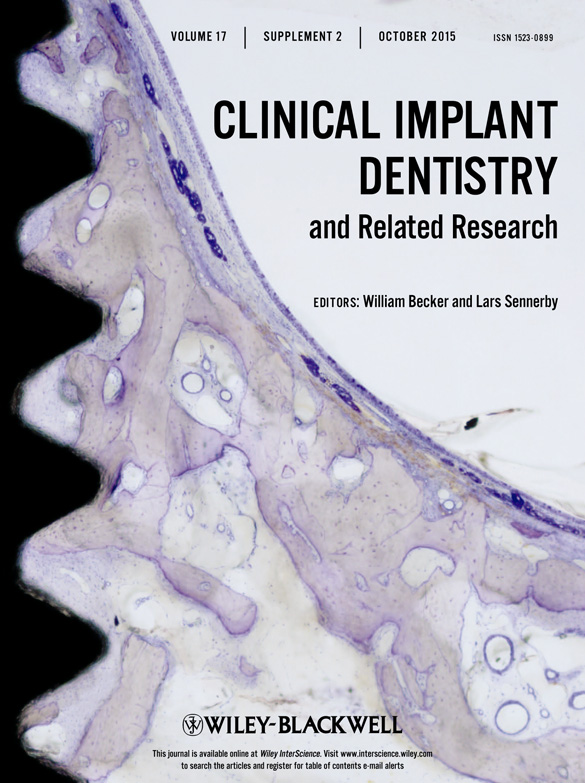Unconventional Implant Placement Part III: Implant Placement Encroaching upon Residual Roots – A Report of Six Cases
Abstract
Background
When a residual root is found in the way of a planned implant placement, invasive surgery is usually performed in order to remove it. Consequently, implant therapy is rendered more complex and lengthy.
Purpose
We present 6 cases treated according to an unconventional protocol in which invasive surgery was avoided by allowing the implants to encroach upon the residual roots in order to permit a prosthetically driven surgery.
Materials and Methods
Six patients were treated with 7 implants placed through a residual root (4 in the mandible and 3 in the maxilla). The residual roots had to be clinically and radiographically asymptomatic and covered by bone or healthy gingiva. The radiographic follow-up ranged from 20 months to 9 years.
Results
Healing was uneventful. Implants were clinically stable, and radiographic examination did not show any unusual feature at the root-implant interface.
Conclusion
Several types of new implant-tissue interfaces were created in addition to the classical implant-bone interface, but this did not seem to jeopardize implant integration. Reports of more cases with a longer follow-up are needed before this protocol can be endorsed for routine application. Nonetheless, if confirmed as acceptable, this protocol might open intriguing possibilities; it might also lead to revision of one of the leading concepts in dental implantology.




